Estimated reading time: 17 minutes
CONTENTS
- Introduction
- Why is onboarding so important?
- How does being a remote worker affect onboarding?
- Preboarding: start as you mean to go on
- Get the basics right
- Culture and values
- Training without overwhelming
- Building relationships
- Keeping the momentum going
- Evaluation, reflection and refinement
- Using data effectively
- Summary
- About the author
As increasing numbers of us join the ranks of remote working employees, new challenges have arisen: how can we communicate effectively? What strategies should we use to manage remote workers? How can organisations support staff wellbeing in a home work setting?
Among the most pressing of these issues is how we should welcome new employees when visiting the office is not an option. For some organisations, this has been an opportunity to examine induction programmes that are perhaps no longer fit for purpose. So, how can we improve our onboarding processes to best suit the needs of staff joining as remote workers (and rejuvenate our approach to welcoming new starters altogether)?
We’ll take a practical look at steps you can take to improve remote onboarding at your organisation, backed up by industry research and insights from our own experiences at Nimble.
Why is onboarding so important?
Effective onboarding has an undeniable impact, not just directly for the new employee, but more broadly for the organisation’s effectiveness as a whole. When new staff are welcomed into a role in a well-planned, thoughtful and consistent way, they are more engaged, more likely to meet performance expectations, and happier at work.
These are just some of the benefits, uncovered by research, when staff experience a comprehensive induction programme:
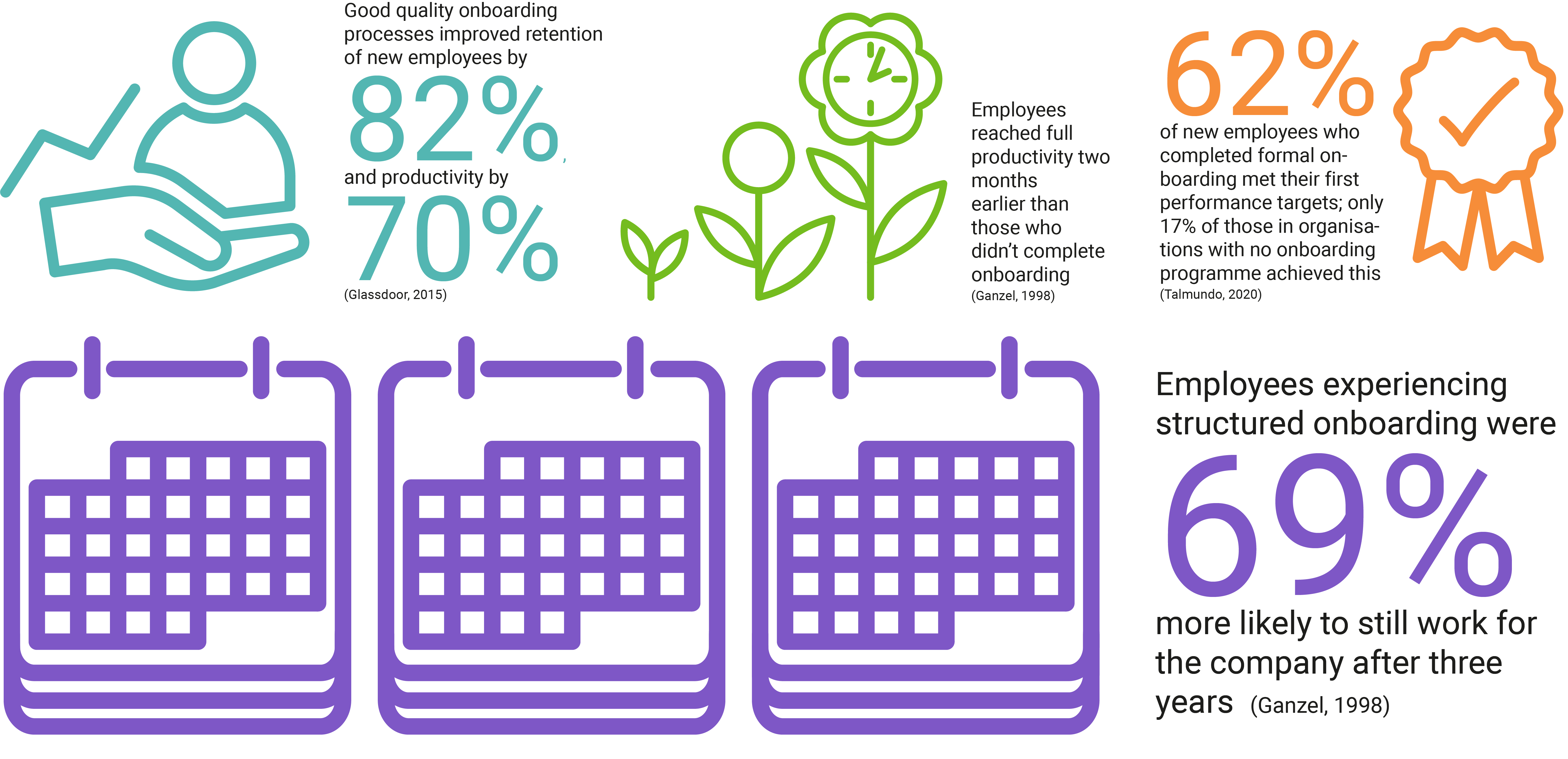
How does being a remote worker affect onboarding?
Starting a new job is stressful under any circumstances. We all want to feel supported in our new role, and the induction process is a key way to get up to speed with expectations and processes. Without the human interaction element, it could be easy to leave new employees feeling isolated, unsupported, and unsure of their role. Even with the basics covered, there may be differences that are difficult to spot, but could cause problems further down the line.
Research undertaken by TINYPulse comparing new hires in April-September 2019 (who experienced face-to-face onboarding) and those who joined in the same period during 2020 (onboarded remotely, due to the COVID-19 pandemic) has some fascinating insights into the differences. Although both groups report similar levels of satisfaction with the onboarding process, their actual behaviour paints a different picture.
All the employees in the study were using a peer recognition tool, designed to give staff the opportunity to publicly celebrate their peers’ achievements.
The number of such interactions was 34% lower in the remote onboarding group than in the face-to-face group. What’s more, there was a 20% drop in assigning company values to these peer recognition actions. Recipients of positive feedback from colleagues were also less likely to send a quick thank you message.

This data suggests that new hires who started at the organisation virtually were less in-tune with the overall aims and culture of the business – and were also less personally connected to one another. We’ll discuss how to keep relationships and values at the forefront of your remote onboarding plans, creating opportunities for meaningful interactions between employees.
Despite the challenges, you can choose to refocus: take advantage of the opportunities that remote onboarding has to offer. Virtual induction of new employees has its plus points and can allow for creative, inspiring approaches that set your new hires off on the right foot. Joining a company remotely can have its advantages; notably, a remote onboarding process forces organisations to collate key information and documents digitally that might otherwise be difficult to locate later. This makes it easy for a new starter to refer back to policies, procedures, training documentation and guidelines as they settle into their role.
Of course, there are challenges unique to virtual onboarding: technical support, reduced concentration spans, and difficulty connecting on a human level might all be issues you face. However, with careful consideration and planning, these can be mitigated.
At Nimble, we’ve recently hired a number of new employees – and completed the whole induction process while all staff have been working remotely. Fundamentally, the purpose of onboarding is to ensure a smooth start for every new employee; by keeping the needs of that employee at the heart of your plans, the process will be a success (whether in-person or virtually).
Getting it done
Encourage existing staff to welcome their new team member ahead of their start date. These messages could be collated by HR and sent on to the new hire, accessed ahead of time via limited access to company systems, or even sent to their personal email address (if they are comfortable with it being shared, of course). You may also want to offer new employees the opportunity to speak directly with key team members before they start, to connect on a personal level.
There’s obviously a balance to be struck here between providing employees with enough key information before they start their role, and overwhelming them with tasks (being mindful of the fact they’re not yet on your payroll and are likely to be busy wrapping up loose ends at their current job).
It might not sound like rocket science, but simply providing new employees with fit-for-purpose IT equipment that’s ready to use on their first day will (embarrassingly enough) put you in the top tier of proactive organisations. One study found that over 90% of new starters reported technology problems during virtual onboarding (Pavlina, 2020). Does your new starter need a webcam, microphone, foot rest or laptop stand? Do they have a comfortable chair, or require a second screen?

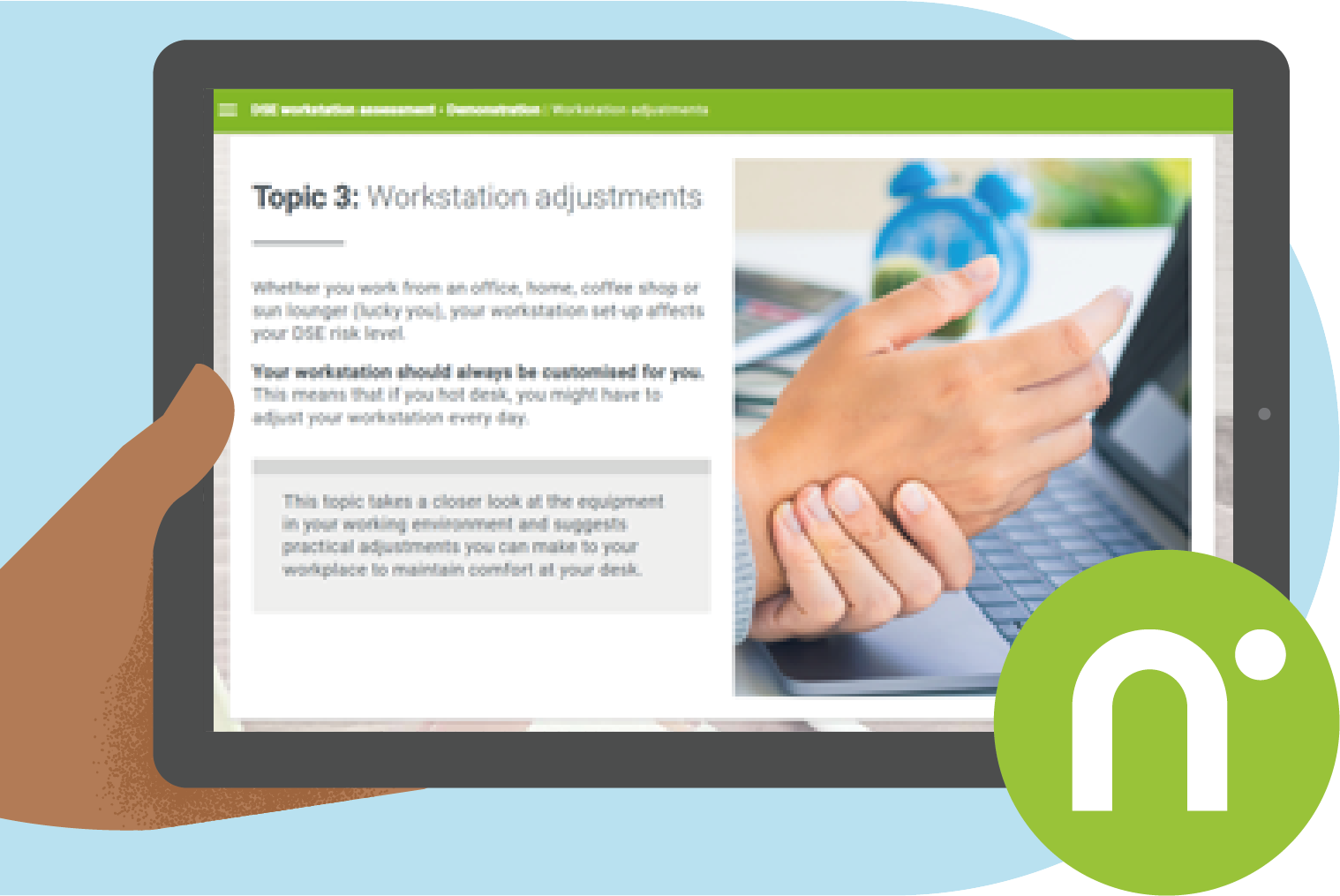
Consider providing a straightforward elearning course to make sure employees set up their space safely; our DSE workstation assessment Nimble course is a great starting point.
Think carefully too about which key IT information your new employees will require in order to get started, and which would be more helpful to cover later on in the induction process. If you have a password policy, for example, this should be one of the first things you discuss (potentially even during preboarding), to avoid well-meaning new staff creating unsuitable passwords for all their new accounts! Data security is of particular importance when working remotely; this really should be a first-day topic.
Finally, make sure you lay the onboarding process out clearly for each new employee. Pavlina (2020) recommends creating a centralised file or folder for every new starter, containing all the information they need. It may sound basic, but simply providing a personalised onboarding checklist, broken down by time period, gives new staff a clear picture of where they’re heading and reinforces a feeling of being valued and supported. It also helps all those involved with the process (whether HR, line managers, product specialists or trainers) a handy reminder of expectations. When you’re completing induction and onboarding remotely, ‘winging it’ isn’t really an option!
Culture can seem like a nebulous concept. Does it really matter to employees in their daily work? Recent data suggests that yes, it’s actually of core importance for many staff, and could be the deciding factor when weighing up whether to stay or go. One survey found that 47% of people looking for work cited company culture as a reason for leaving their current organisation (Hays What People Want report, 2017).

Welcoming a new employee into your organisation’s culture is one of the most challenging aspects of remote onboarding. Research shows that developing social understanding is more difficult in a remote work environment; without the chance to observe existing employees interact with one another, new starters lose many informal opportunities to learn about cultural norms (Korte, 2007). Company values won’t simply be absorbed by new employees; make them explicit from the start, demonstrate them in action, and set expectations clearly – or your new remote staff are likely to struggle (Ellis et al, 2015).
Fundamentally, culture is built through interactions with one another. What are the expectations for communication and behaviour? There are so many intangibles that come into play when joining a new organisation. If you can recognise these and make them as concrete as possible, your new starter will feel more comfortable from day one. Think carefully about those small choices you take for granted as a seasoned employee: is it acceptable to schedule a meeting in a senior manager’s calendar? When should email be used to communicate internally, and when is a call or chat message preferred? How do you mark birthdays or special events? Is it OK to block out time in your own calendar to get things done, or set your status to ‘do not disturb’?
All of these may seem like tiny elements of life at work, but add up to create a cultural picture that can seem impenetrable to an outsider unless they’re guided through it.
At Nimble, we agreed upon our internal values by thinking about exceptional employees who were respected and trusted within the company. We teased out the behaviours and attitudes that they exemplified, and distilled them into four core values:
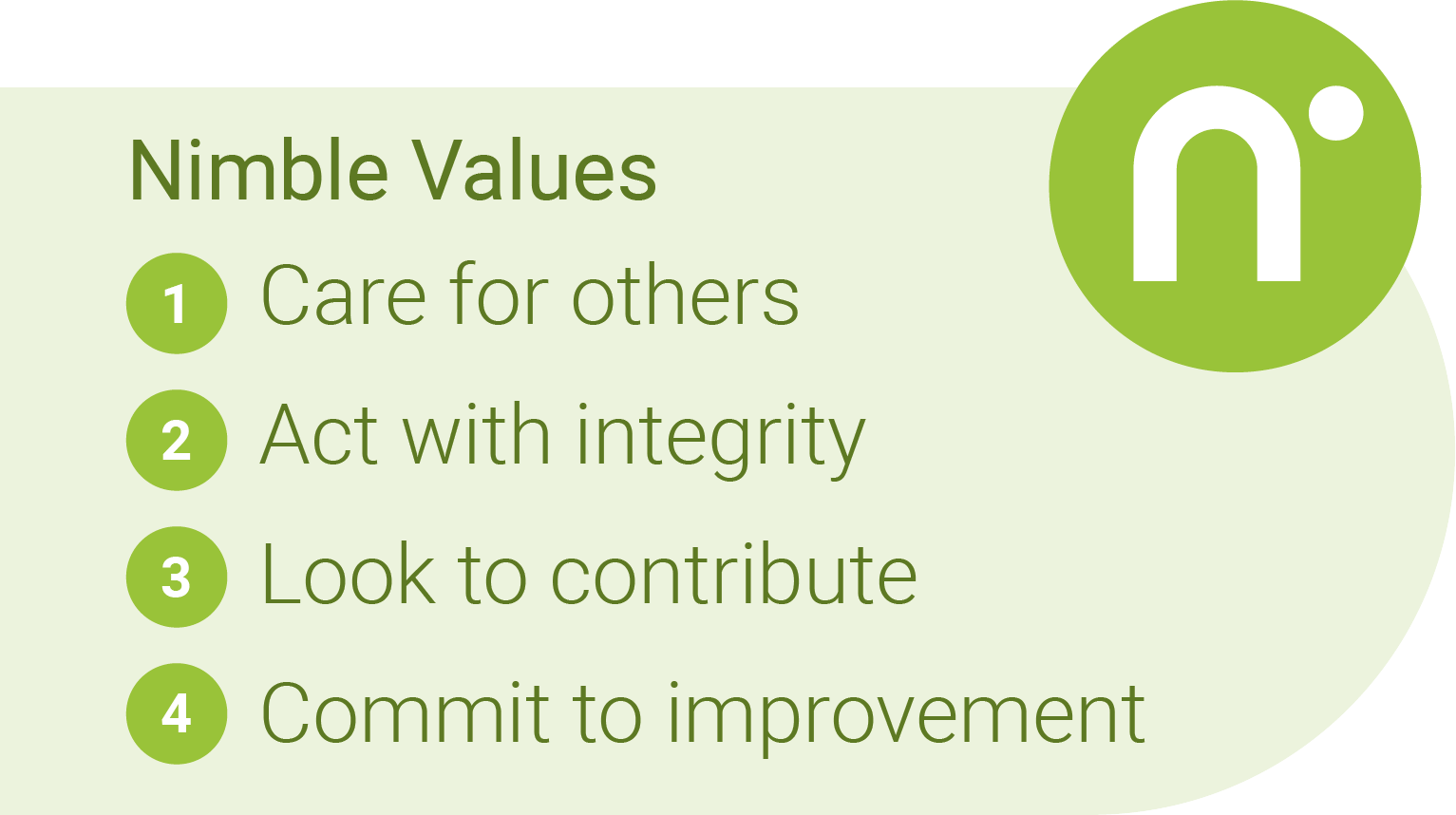
It’s also critical to ensure that team members aren’t left feeling like they’ve been indoctrinated. Bombarding them with cultural norms without valuing their own experiences and skills can make staff feel as though they need to hide their identity in order to fit in (Cable et al, 2013). People want to be authentic at work. Give them opportunities to reflect on their own strengths and how these can be applied in their new role. In this way, individuals can come together around shared values without compromising their authenticity.
Begin by defining the purpose of any training you offer as part of an induction programme. What would you expect your new employee to know (or better yet, be able to do) at the end of their first week? How about by the time their first month of employment is complete, or six months down the line? These expectations should be clear to everyone involved, and the path to achieving them should be laid out from the start.
Compliance training is of course at the forefront of any induction plan, and elearning offers a cost-effective way to deliver this in a way that allows learners to access it as and when they have time in their schedule. It’s likely that a remote new starter will be spending a lot of time in video meetings during the early days and weeks of their role; self-guided elearning can provide a welcome change of pace. Finding well-written compliance courses that are always up-to-date with the latest legislation (and that present the necessary information in a digestible, engaging format) is easier said than done, however.
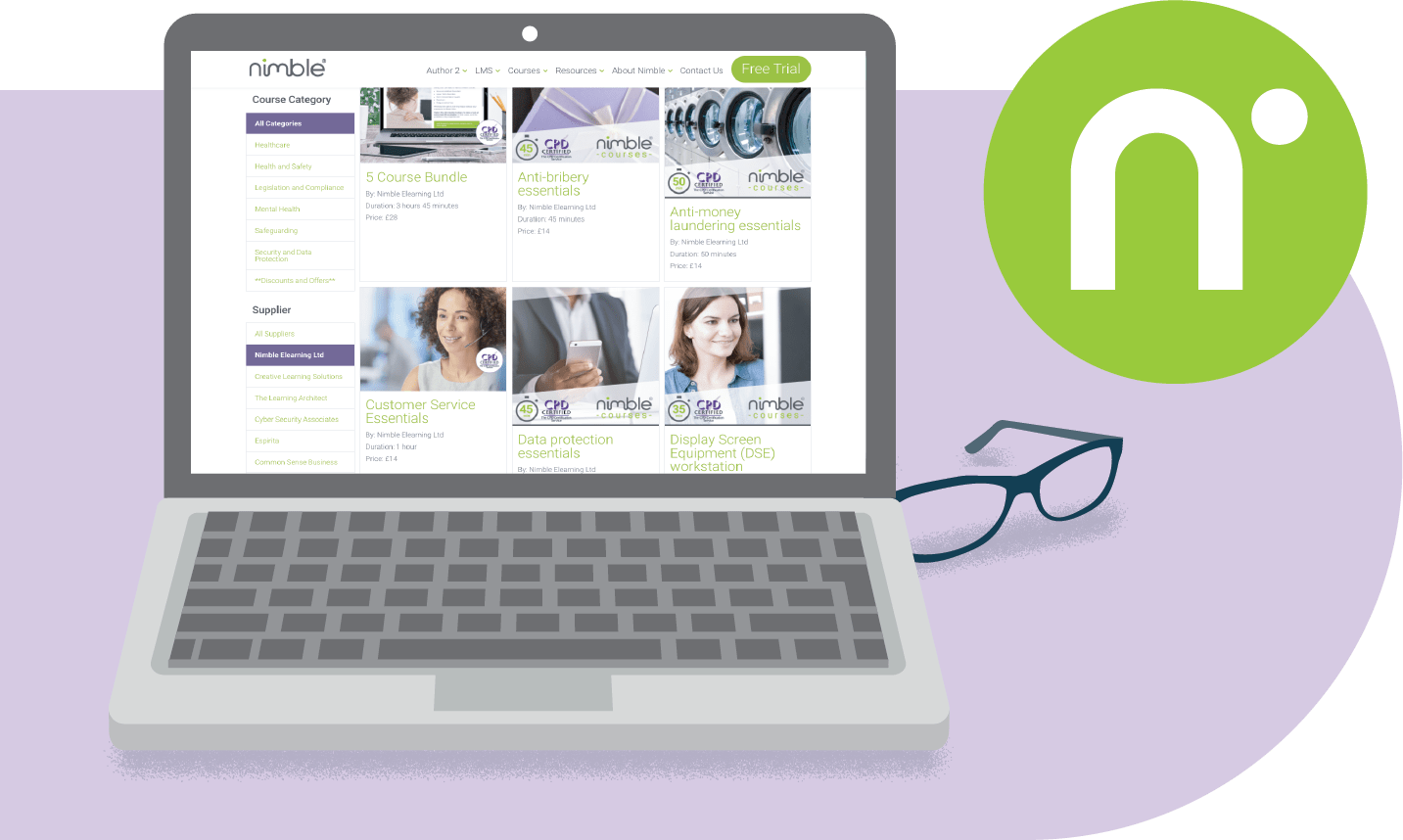
One of the best options is to purchase editable courses that can be imported into your Learning Management System (LMS); this offers the assurance of a quality course alongside the ability to customise branding and even alter examples or case studies to bring them in line with your industry or sector.
Nimble Courses are fully editable and CPD accredited, covering the basics your staff need to get up and running: data protection, anti-bribery, fire safety, manual handling and information security, plus many more.
Simple job aids that can be accessed when following a process can sometimes be a better option than a formal course. Also consider using microlearning to enable employees to access the training they need, when they need it. Depending on the task at hand, you might offer a short course of a few pages, a well-designed one-page document or diagram, or a brief video.
We have undoubtedly all experienced training overload in the first few days of a new job, well aware that much of the information will be instantly lost from our memories. Having access to the key points in a useful format will increase the likelihood of new employees following the processes and procedures accurately – not just as they start their role, but as they develop over the course of their employment

Formal training – whether in the form of elearning courses or online webinars – should be balanced with informal learning methods (the now-famous 70:20:10 model may have received its share of criticism, but the value of learning ‘in the flow of work’ is undisputed). These might take the form of one-to-one chats with colleagues, ‘listening in’ on meetings or other methods of communication between experienced staff, exploring key tools or products independently, completing simple tasks and receiving feedback, or simply reading around the subject. Of course, which methods work best will depend on the type of role and organisation. Regardless, they should be spelled out as options in the new starter’s onboarding plan.
This ties into what can be a fundamental tension when onboarding new staff, particularly in larger organisations: how centralised services (HR and L&D departments) can work in tandem with decentralised management. Line managers are absolutely critical to the success of any onboarding programme, and giving them the time to support new employees effectively will have a big impact. All too often, an induction plan is handed down from above without proper consultation, and managers on the ground are left to fill in the gaps. A coordinated effort is a challenge to implement, but will have enormous benefits – not just for the new starter, but for the development of all employees going forward.
Just like communicating organisational values, forming connections with others is one of the most challenging aspects of beginning a new role remotely. Human connection and a sense of belonging are absolutely key to employee engagement and satisfaction; so what practical steps can you take to ensure that new starters have the chance to flourish?
Begin by personalising the induction to meet the needs and skills of your new employee. Something as simple as ensuring their name is pre-filled on documentation, or directing them to specific information that they may find personally interesting based on their past experience, can go a long way to building a solid relationship from the start.
Socialising is more difficult to achieve when team members aren’t present together in the same space. With a little planning, you can create a range of opportunities for new starters to connect with their colleagues. Virtual team lunches and coffee breaks, where personal conversations are encouraged, are a great place to start. Many organisations are also exploring creative virtual icebreakers: from karaoke and escape rooms to cookery kits and scavenger hunts. Take care to involve staff in your choice of activity, however. Some teams might relish the thought of a dance-off; others might consider it their worst nightmare. You could also consider creating a space for interest groups to meet virtually (workplace chat channels in Slack or Teams are perfect for this) – and these needn’t be work-related!
Relationship-building with close colleagues or a core team is likely to happen whether you plan for it or not. What takes a more intentional approach is the development of connections between employees across departments. In a traditional office environment, chats in the hallway or kitchen (or even simply overhearing conversations) might have ensured this happened organically. If your teams are working remotely, this needs to be cultivated.
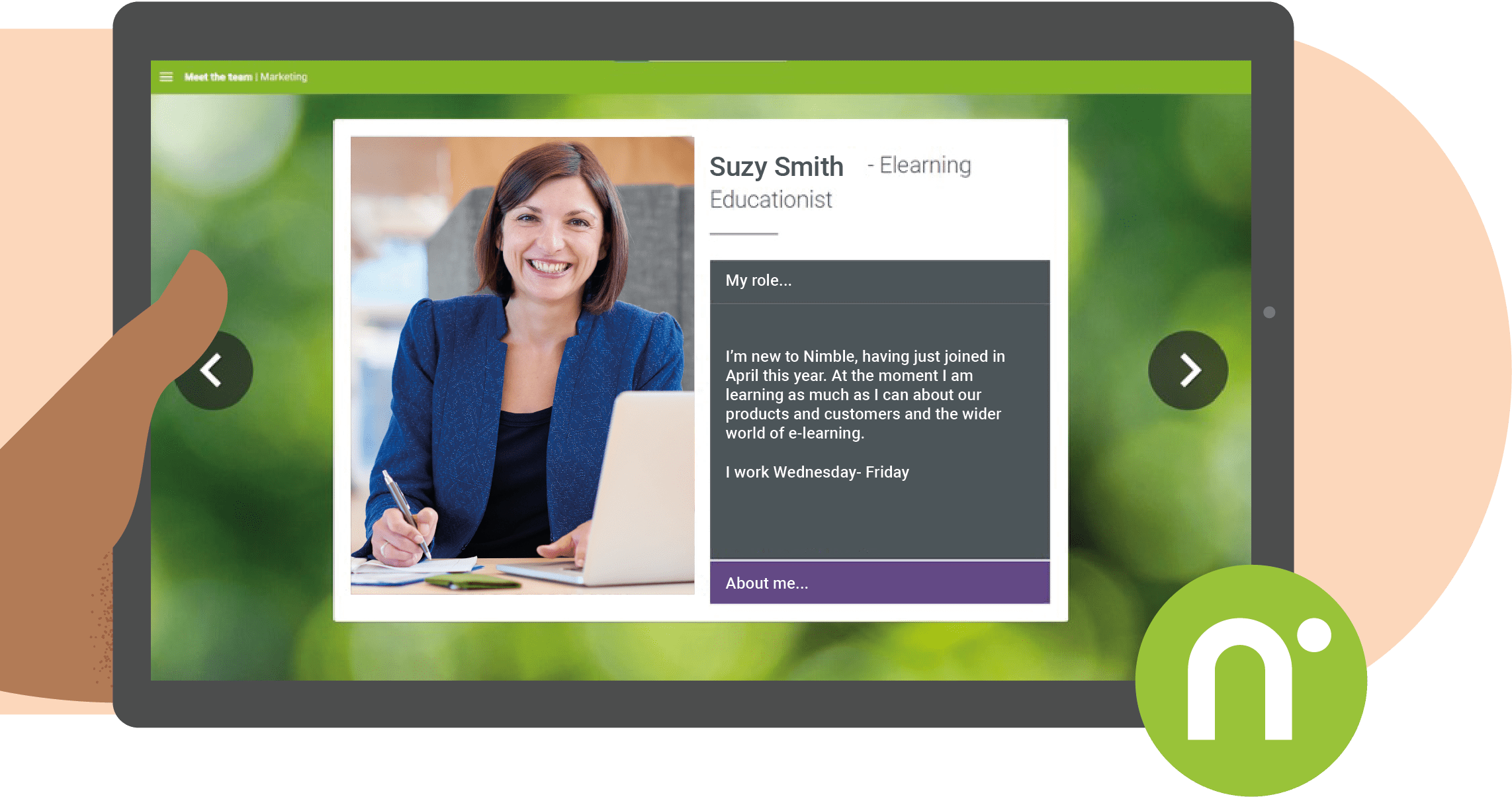
Schedule one-to-one meetings for your new employees, and don’t forget to include key staff members outside their immediate team.
Create a simple elearning course to introduce team members. It doesn’t have to be anything fancy; just ask employees to write a few sentences about their role and their interests outside of work, and to provide a favourite photo. This has been highly effective at Nimble, and gave new staff handy conversation starters (not to mention the help with putting names to faces).
It’s important to recognise that it takes time for new employees to learn the ins and outs of their role, the team and the wider organisation. In a remote working environment, an extended onboarding process is arguably even more critical. If you assume your new starters are fully up to speed after a few weeks, it’s all too easy to set them adrift without the support they need.
Keep reinforcing company values. Too often, these are mentioned at the start and never referred to again. Give public recognition to employees who act in line with your shared values, and encourage peer acknowledgement too (whether formal or informal). Remember that company culture is as much about how employees interact with one another as it is about customer relationships. This can be more of a challenge when some or all of your employees are working remotely, but continuing to support new staff as they become accustomed to their role is one of the best ways to demonstrate your organisation’s core values in action.
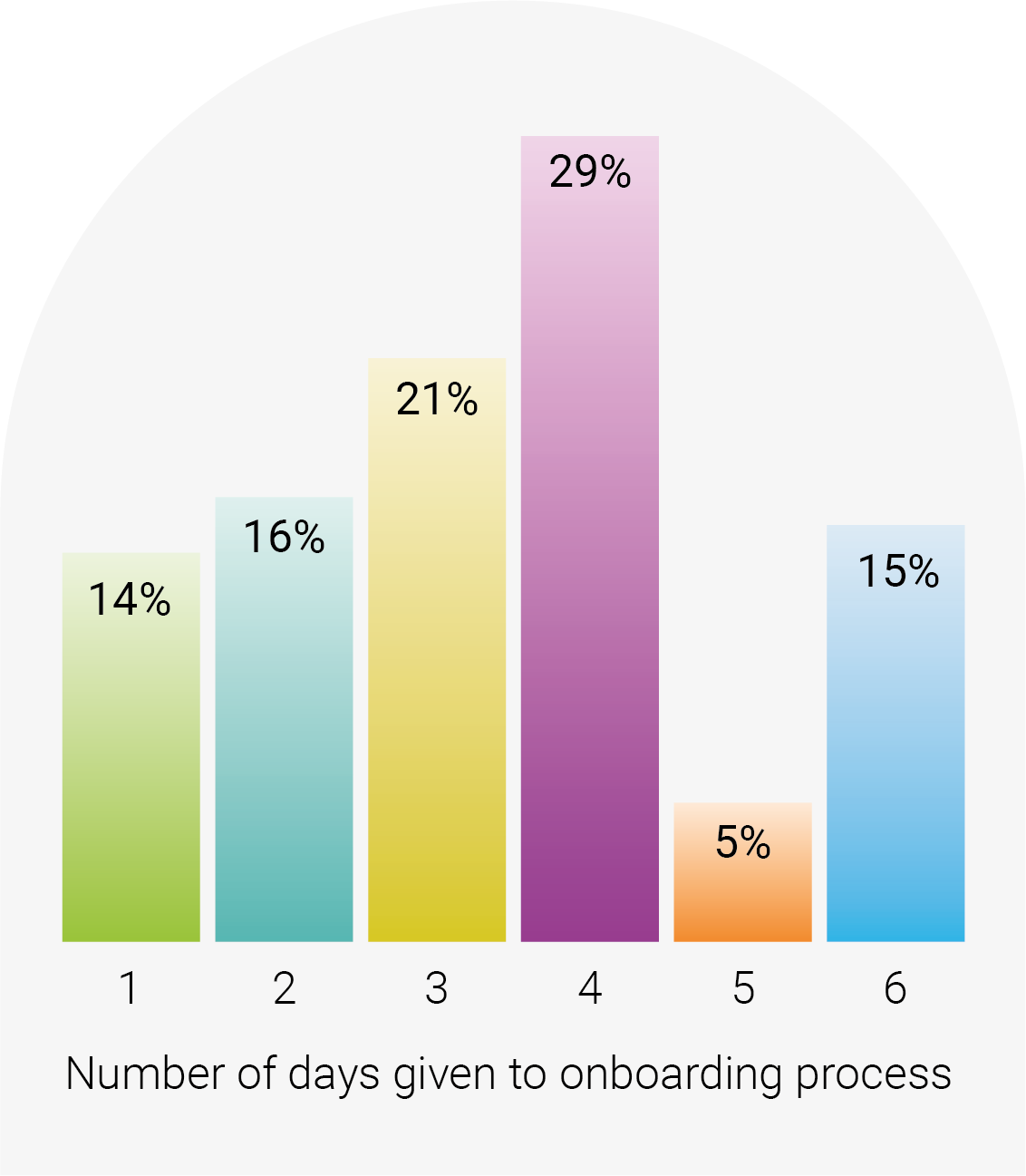
Driving improvement

You might also want to speak to employees who’ve been with you for a while about their experience of starting. Even if your induction process wasn’t fully formed (or virtual!) at the time, they could provide useful information about what they found most and least helpful. Plans for onboarding shouldn’t be set in stone. Your approach will change as the needs of the organisation (and employees) change, and as you learn how to better support new staff.
As with any aspect of the HR or L&D role, collecting, analysing and presenting the right data can be the difference between becoming an undervalued department and the essential core of the organisation. How will you measure the impact of your virtual onboarding programme, and what will success look like?
Consider the following metrics:
- Time to productivity
- Employee satisfaction or engagement
- Manager satisfaction
- Employee retention rate

Start with the questions you want to answer, rather than the data you have (Towards Maturity, 2018). If the prospect of collecting and analysing data seems intimidating and time-consuming, begin by choosing a single area of focus, starting with a simple question. For example: how many new remote employees leave within the first year, and has this changed upon introducing a structured onboarding process? What proportion of new staff meet or exceed expectations during their first six months, and how has this changed? In examining a small dataset with a narrow focus initially, you may well find a compelling argument to present to senior leaders about the value of a carefully considered onboarding programme.

In summary, remote and hybrid working practices are here to stay. In building a reflective, organised approach to virtual onboarding, you can improve outcomes for new staff and meet broad organisational objectives.
Adapting to new ways of welcoming employees needn’t be intimidating; as we’ve seen from research, making simple changes can have a lasting impact.
First impressions count. By providing a clearly structured induction programme in the first weeks and months, new starters will feel supported, understand your organisation’s culture, and begin to thrive – whether in the office or at home.

ABOUT THE AUTHOR
Hannah is Nimble’s Learning Adviser, providing L&D insights that our current and prospective customers value. Writing thought provoking articles that are delivered across multiple formats as well as a range of initiatives including training, white papers, videos, elearning courses, blogs, seminars, webinars, monthly emails, knowledge bases, case studies, podcasts and one-to-one meetings.
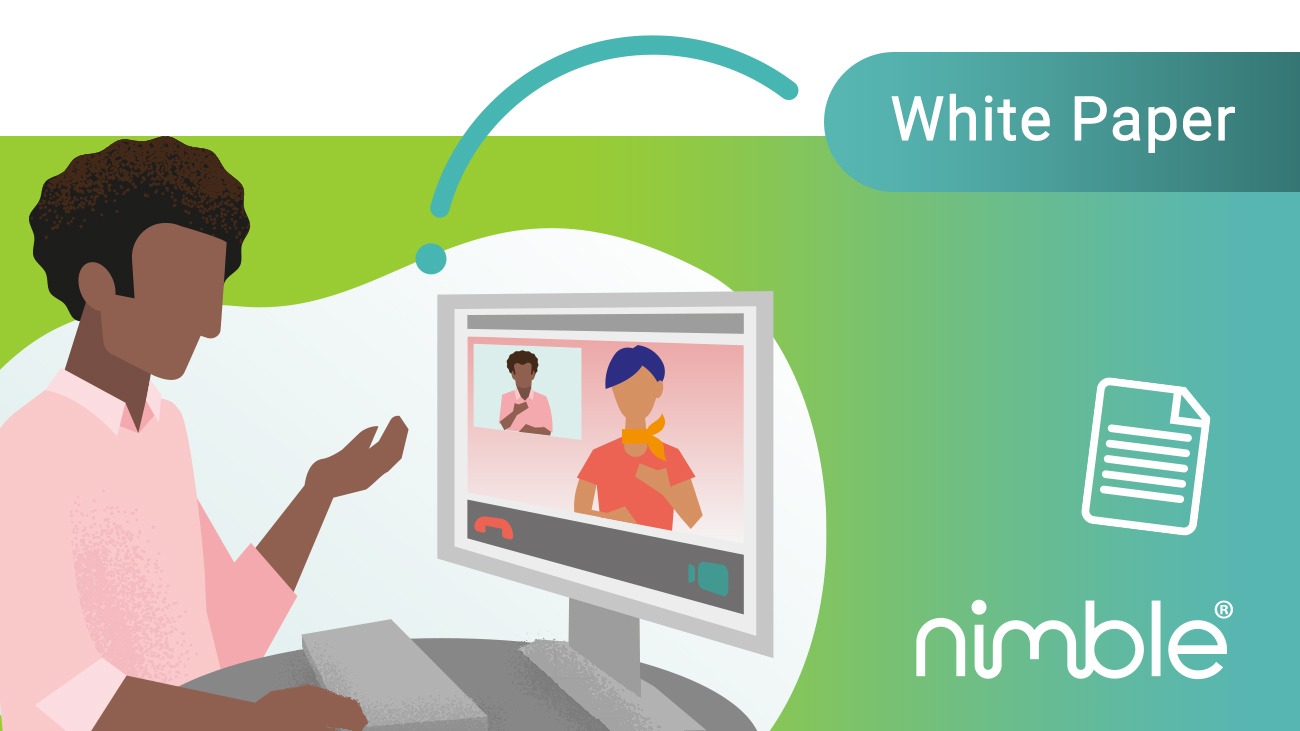
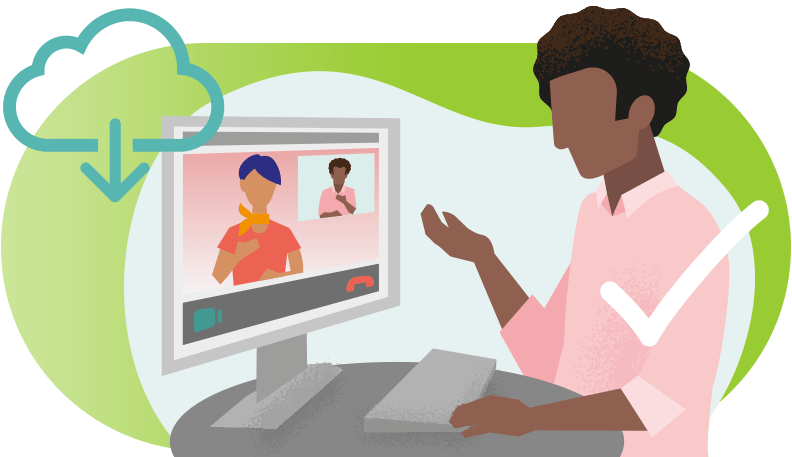








0 Comments